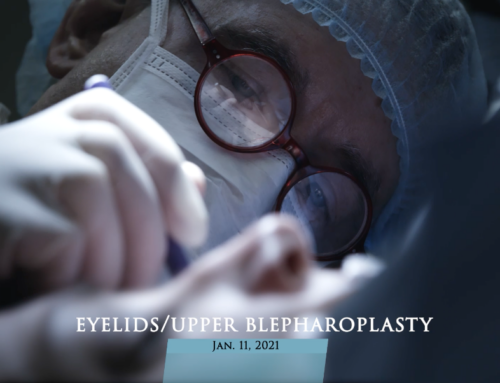A composite facelift is a more advanced facelift surgery that addresses all facial aging, from the lower eyelids down to the clavicle (collarbone). The operation is very thorough and is designed to provide natural looking results that last a lifetime.
The word “composite” is used because the skin remains attached to a deeper layer called the SMAS (superficial musculoaponeurotic system). The allows the fat pads in the face to be transposed to a more youthful position. The skin comes along with SMAS like baggage on a flatcar.
After the maneuvering of the tissues is complete, there is excess skin generated. This excess skin is trimmed to allow for a tension-free closure. The absence of tension on the skin allows for a better scar and eliminates the “pulled too tight” look that more superficial facelifts can generate. This provides a much more natural appearance and a much happier patient.
Complementary Procedures
Facelifts are commonly performed in conjunction with other procedures for facial aging. Although these additions do increase the surgery time, they do not jeopardize patient safety.
Loss of facial volume is part of aging, so fat grafting has become a mainstay in patients who have experienced some aging atrophy. The addition of this procedure has been found to be safe and effective. Patients donate their own fat so there is no chance of rejection or unwanted response to foreign material.
Eyelid surgery, also called Blepharoplasty, is another common addition to a facelift operation. The operation is relatively short in duration, the incisions practically invisible, and the results are very good. The patient satisfaction rate is extremely high with very short convalescence, little pain, and observable results almost immediately.
The composite facelift operative plan begins with careful analysis of the sign of aging for each patient. The surgeon’s job is to make the patients feel better about themselves. Ultimately it is the patient that decides what is to be performed during the operation.
Recovery Time and Healing
When a composite facelift is performed there is very little blood loss, and most patients report little postoperative pain. Narcotics are prescribed but seldom are needed.
Patients are expected to be up and about the next day. The sutures are removed in a week and light athletic activity can begin at that point.
By the second week of recovery, most patients can apply makeup and resume a social life without having to explain that they have had a facelift. Naturally this is not the case each and every time, but the timeline fits the majority of patients.
Is a Composite Facelift Right for You?
If you are interested in having a composite facelift performed, it is important for you to seek out a board-certified plastic surgeon who has experience with this particular technique.
When I meet with prospective patients, I show them an extensive gallery of patients that have undergone composite facelifts. This allows the patient to better understand their options and it sets expectations for surgical outcomes.
I also show patients the different stages of recovery, so they have a good understanding of what to expect along this surgical journey.
If you are interested in learning more about composite facelifts, contact our office at 678-566-7200 to set up a complementary consultation.


















